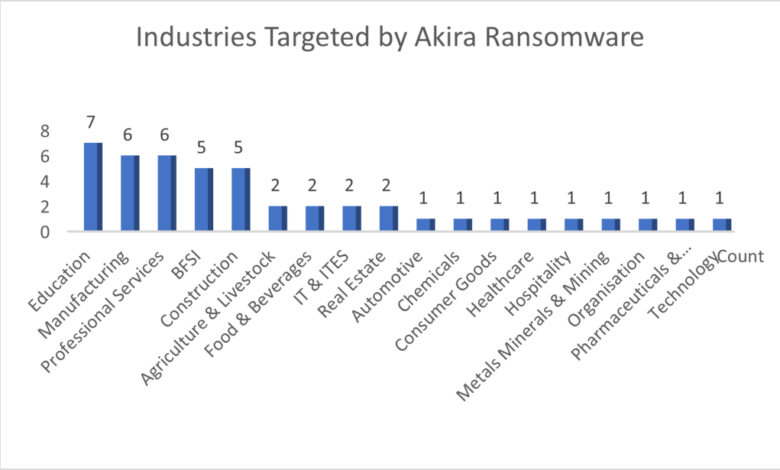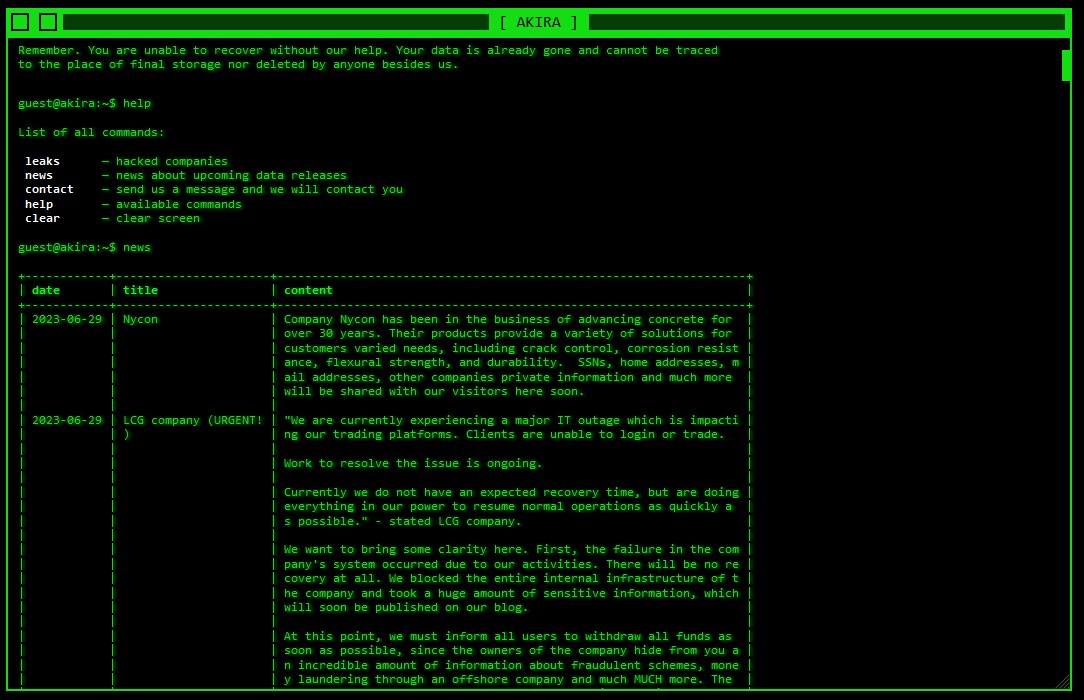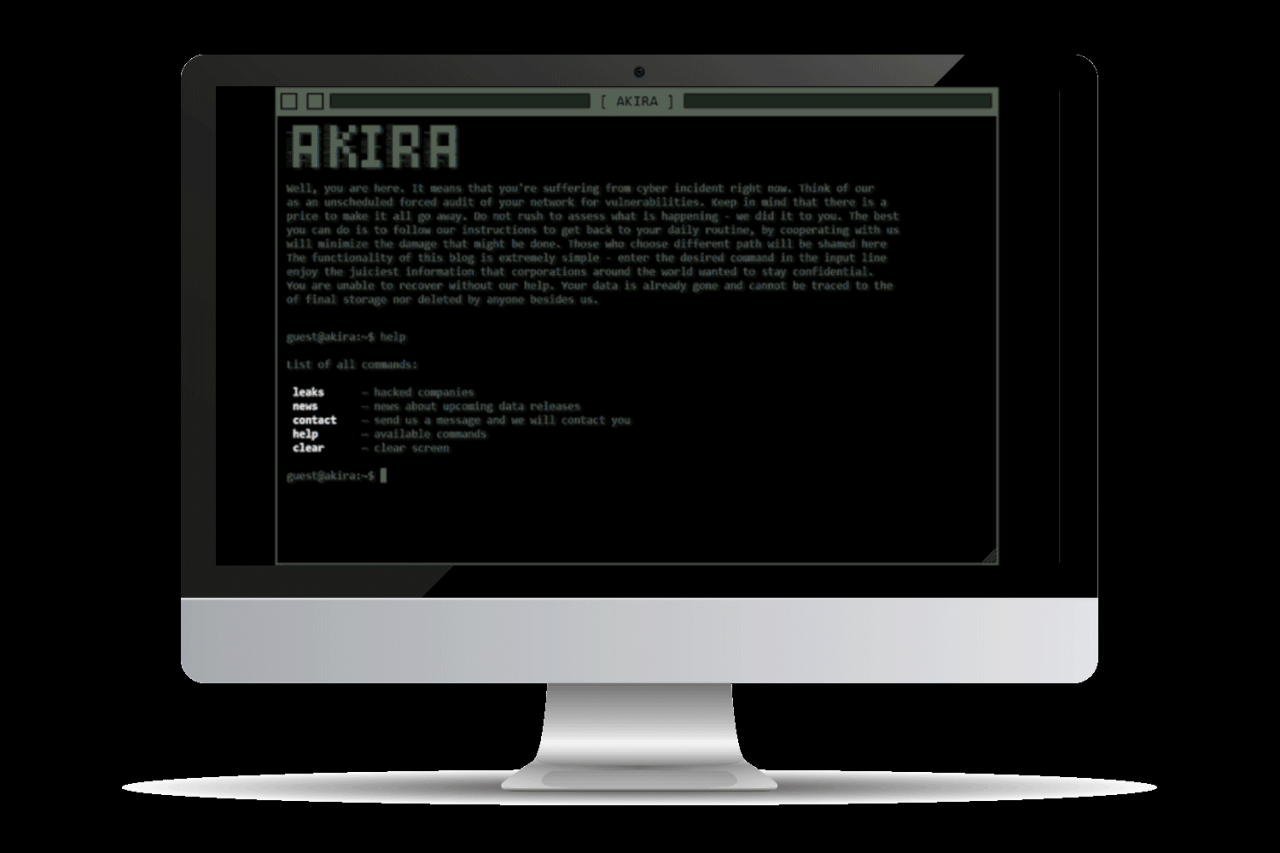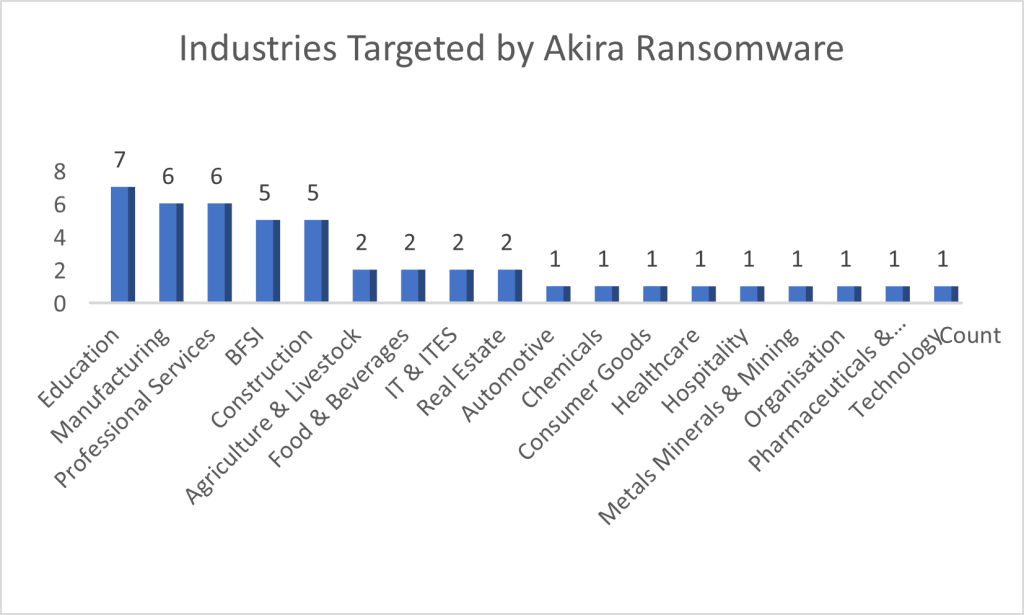
Akira and BlackByte Ransomware Attack on Yamaha Music Canada
Akira and BlackByte ransomware group claim attack on Yamaha Music Canada sent shockwaves through the music industry. This brazen attack highlights the increasing sophistication and audacity of ransomware groups targeting even established corporations. The incident raises critical questions about cybersecurity vulnerabilities, the effectiveness of preventative measures, and the potential ramifications of paying ransoms. We’ll delve into the details of the attack, examine the tactics employed by the perpetrators, and explore the broader implications for data security in the digital age.
The attack on Yamaha Music Canada allegedly involved the theft and encryption of sensitive data, potentially impacting both the company’s operations and its customer base. The Akira and BlackByte groups, known for their aggressive tactics and high ransom demands, are under scrutiny for their roles in this incident. Understanding their methods and motivations is crucial for developing effective defense strategies against future attacks.
Akira and BlackByte Ransomware Group
The recent attack on Yamaha Music Canada, allegedly perpetrated by the Akira and BlackByte ransomware groups, highlights the evolving landscape of cybercrime. Understanding the operational methods and targets of these groups is crucial for effective cybersecurity defense. While the exact nature of their collaboration (if any) remains unclear, analyzing their individual TTPs offers valuable insights into their capabilities and potential future actions.
Akira Ransomware Group Operational Methods
The Akira ransomware group is relatively new to the scene, making comprehensive analysis challenging. Information regarding their specific operational methods is still emerging, but initial reports suggest a focus on data exfiltration prior to encryption. This double extortion tactic, common among ransomware groups, maximizes their leverage against victims. They likely utilize spear-phishing campaigns and exploit vulnerabilities to gain initial access to target networks.
Further research is needed to fully understand their encryption techniques and ransom negotiation processes.
BlackByte Ransomware Group History and Targets
BlackByte, in contrast to Akira, has a more established history. Active since at least late 2021, this group has targeted a wide range of organizations across various sectors, including healthcare, manufacturing, and finance. Their attacks are characterized by sophisticated techniques, often involving the use of compromised credentials and lateral movement within the victim’s network to maximize data exfiltration and encryption impact.
Notable targets have included large corporations, demonstrating their capacity to breach robust security systems. Their ransomware encrypts files using AES-256 encryption, making recovery without the decryption key extremely difficult.
Comparison of Akira and BlackByte TTPs
While both groups employ ransomware as their primary weapon, their specific TTPs show some differences. BlackByte appears to be more advanced and resourceful, leveraging more sophisticated techniques for initial access and lateral movement. Akira’s methods, based on currently available information, seem less sophisticated, though this could simply reflect the group’s relative youth and limited public exposure. Both groups, however, share the common tactic of double extortion, combining data encryption with the threat of publicly releasing stolen data unless a ransom is paid.
This underscores a broader trend in ransomware attacks towards maximizing financial gain and reputational damage to victims.
Potential Links or Collaborations Between Akira and BlackByte
The involvement of both Akira and BlackByte in the Yamaha Music Canada attack raises questions about potential collaboration or a shared infrastructure. Currently, there is no definitive evidence confirming a direct partnership. However, the possibility of resource sharing, affiliate programs, or even a single group operating under multiple names cannot be ruled out. Further investigation is required to determine the true nature of their relationship, if any.
The lack of readily available, publicly verifiable intelligence makes it difficult to definitively assess any potential links at this time. Future analysis, potentially involving threat intelligence sharing between cybersecurity firms and law enforcement agencies, may shed more light on this aspect.
The Yamaha Music Canada Attack

The cyberattack on Yamaha Music Canada, attributed to the Akira and BlackByte ransomware groups, serves as a stark reminder of the ever-present threat facing even large, established companies. While details remain somewhat scarce due to the involved parties’ reticence, piecing together available information paints a concerning picture of the incident’s scope and potential impact. This analysis focuses on establishing the known facts surrounding this significant data breach.
Reported Details of the Yamaha Music Canada Attack
Reports indicate that Yamaha Music Canada experienced a significant ransomware attack, with both data encryption and exfiltration occurring. The attackers, identified as the Akira and BlackByte groups, are known for their sophisticated techniques and aggressive extortion tactics. The specific methods used in this attack, however, remain largely undisclosed by Yamaha Music Canada. The lack of transparency hinders a complete understanding of the attack’s technical aspects, leaving room for speculation and emphasizing the need for greater openness from affected organizations in future incidents.
Data Allegedly Stolen or Encrypted
The precise nature and extent of the stolen and encrypted data remain unconfirmed. However, considering the nature of Yamaha Music Canada’s business – encompassing sales, distribution, and potentially customer data – the compromised information could include sensitive customer details (names, addresses, payment information), financial records, intellectual property, and internal operational data. The potential for significant financial and reputational damage is considerable, given the sensitive nature of such data.
The lack of a detailed public disclosure by Yamaha Music Canada leaves much to be determined regarding the specific types of data affected.
Timeline of the Attack
Establishing a precise timeline is difficult due to the limited information publicly available. The attack likely occurred sometime before its public disclosure, but the exact dates of initial compromise, data exfiltration, and the ransomware deployment remain unknown. The delay between the attack and public disclosure might reflect Yamaha Music Canada’s internal investigation and response efforts, as well as potential negotiations with the attackers.
This lack of transparency, however, fuels uncertainty and speculation surrounding the attack’s duration and impact.
Impact on Yamaha Music Canada’s Operations and Reputation
The attack’s impact on Yamaha Music Canada’s operations is likely significant, potentially causing disruptions to sales, distribution, and customer service. The encryption of critical systems could have temporarily halted operations, while the exfiltration of sensitive data poses a substantial risk of financial losses, legal repercussions, and reputational damage. Customer trust could be eroded, leading to a loss of business and potential legal actions.
The long-term effects on Yamaha Music Canada’s profitability and market position remain to be seen, but the potential for negative consequences is substantial.
Timeline of Events
| Date | Event | Source | Impact |
|---|---|---|---|
| Unknown | Initial Compromise | Unconfirmed Reports | Unknown, but likely disruption of systems |
| Unknown | Data Exfiltration and Encryption | Unconfirmed Reports | Loss of data, operational disruption |
| [Date of Public Disclosure] | Public Disclosure of Attack | News Outlets/Security Reports | Reputational damage, potential legal action, investor concerns |
| Ongoing | Investigation and Remediation | Yamaha Music Canada (implied) | Financial costs, operational recovery efforts |
Ransomware Demands and Negotiation

The Akira and BlackByte ransomware attack on Yamaha Music Canada highlights the brutal realities of modern cyber extortion. Understanding the demands, the potential consequences of payment, and the attackers’ motivations is crucial to grasping the full scope of this incident and similar attacks. While the precise details of the ransom demand may not be publicly available due to Yamaha’s likely desire to keep the matter private, we can analyze the situation based on typical ransomware attack patterns.The nature of the ransom demand likely involved a significant sum of money, potentially in cryptocurrency for untraceability, demanded in exchange for the decryption key to unlock Yamaha Music Canada’s encrypted data.
This data could range from sensitive customer information and financial records to proprietary software and intellectual property. The attackers likely threatened to release this data publicly if the ransom wasn’t paid, creating a double-edged sword of financial and reputational damage.
Financial and Reputational Costs of Ransom Payment
Paying the ransom carries substantial risks. The financial cost is immediately apparent – a potentially crippling sum depending on the size of the company and the attackers’ demands. However, paying the ransom doesn’t guarantee data recovery. Attackers aren’t always trustworthy, and there’s a risk they may not provide the decryption key even after payment. Furthermore, paying the ransom can incentivize future attacks, signaling to other threat actors that the company is a “soft target.” The reputational damage is equally significant.
News of a ransomware attack, regardless of whether the ransom was paid, can severely damage a company’s brand image, leading to loss of customer trust and potential legal repercussions. Consider the case of Colonial Pipeline in 2021; their payment of a substantial ransom garnered significant negative publicity, highlighting the reputational risks.
The Akira and BlackByte ransomware attack on Yamaha Music Canada highlights the vulnerability of even large companies to cyber threats. Building robust, secure systems is crucial, and that’s where understanding the advancements in application development comes in. Learning about the future of app creation, like exploring the possibilities of low-code and pro-code approaches discussed in this insightful article on domino app dev the low code and pro code future , could help companies like Yamaha better protect themselves against future attacks.
Ultimately, preventing such incidents requires a multi-faceted approach, including strong security practices and efficient, modern application development strategies.
Attacker Motivations
The motivations behind targeting Yamaha Music Canada likely stem from a combination of factors. Yamaha, as a large multinational corporation, likely possesses valuable data that could be sold on the dark web or used for blackmail. The attackers may have chosen Yamaha due to perceived vulnerabilities in their security infrastructure or the potential for a large payout. The relatively low-profile nature of the attack, compared to targeting major financial institutions, could suggest a calculated risk-reward assessment by the attackers, choosing a target that offers a substantial payoff with a lower risk of immediate detection and significant law enforcement response.
Legal and Ethical Considerations of Ransom Payments
Paying a ransom is a complex ethical and legal issue. While some argue that paying the ransom is a necessary evil to minimize damage, others contend that it encourages further criminal activity. Law enforcement agencies generally advise against paying ransoms, as it fuels the ransomware industry. Furthermore, there are legal ramifications to consider, including potential violations of sanctions regulations if the payment involves cryptocurrency transactions routed through sanctioned jurisdictions.
The decision to pay or not is a highly sensitive one, requiring a careful risk assessment considering financial, reputational, and legal implications. Companies should always prioritize robust cybersecurity measures and data backups as a preventative measure, rather than relying solely on ransom payment as a solution.
Cybersecurity Measures and Lessons Learned: Akira And Blackbyte Ransomware Group Claim Attack On Yamaha Music Canada
The Yamaha Music Canada ransomware attack, attributed to the Akira and BlackByte groups, highlights critical vulnerabilities in even established organizations. Understanding the likely attack vectors and implementing robust preventative, detective, and responsive measures is crucial for preventing future incidents. This analysis focuses on strengthening cybersecurity defenses to mitigate similar attacks.
Potential Vulnerabilities Exploited
The attackers likely exploited several vulnerabilities. These could include outdated software with known exploits, weak or reused passwords, phishing campaigns targeting employees to gain initial access, and insufficient network segmentation allowing lateral movement once inside the network. The lack of multi-factor authentication (MFA) could have also significantly aided the attackers. Finally, insufficient endpoint detection and response (EDR) solutions might have allowed the ransomware to spread undetected for a considerable period.
Preventative Cybersecurity Measures
Implementing a multi-layered security approach is paramount. This requires proactive steps to prevent initial compromise and limit the impact of a successful attack.
- Regular Software Updates and Patching: Implement a robust patch management system to ensure all software, including operating systems, applications, and firmware, is updated with the latest security patches. This minimizes the risk of exploitation via known vulnerabilities. Automated patching solutions should be prioritized.
- Strong Password Policies and Multi-Factor Authentication (MFA): Enforce strong, unique passwords for all accounts and mandate MFA for all access points. This significantly raises the barrier to entry for attackers. Consider password managers to help employees manage complex passwords securely.
- Security Awareness Training: Regular employee training on phishing, social engineering, and safe internet practices is crucial. Simulations and phishing tests can effectively identify and address vulnerabilities in employee awareness.
- Network Segmentation: Divide the network into smaller, isolated segments to limit the impact of a breach. If one segment is compromised, the attackers will have limited access to other critical systems.
- Robust Firewall and Intrusion Detection/Prevention Systems (IDS/IPS): Implement firewalls and IDS/IPS to monitor network traffic for malicious activity and block unauthorized access. These systems should be regularly updated and tuned for optimal performance.
Detective Cybersecurity Measures
Detecting malicious activity early is crucial to minimizing the damage caused by a ransomware attack. These measures focus on identifying suspicious behavior.
- Endpoint Detection and Response (EDR): Deploy EDR solutions to monitor endpoint devices for malicious activity and provide real-time threat detection and response capabilities. This allows for rapid identification and isolation of compromised systems.
- Security Information and Event Management (SIEM): Use a SIEM system to collect and analyze security logs from various sources, providing a centralized view of security events. This allows for the detection of anomalies and potential threats.
- Regular Security Audits and Penetration Testing: Conduct regular security audits and penetration testing to identify vulnerabilities in the network and systems. This proactive approach allows for the identification and remediation of weaknesses before attackers can exploit them.
Responsive Cybersecurity Measures: Data Backup and Recovery
Having a robust data backup and recovery plan is essential for minimizing the impact of a ransomware attack.
- Regular Backups: Implement a regular backup schedule, ensuring that backups are performed frequently and stored securely, ideally offline or in a geographically separate location. The 3-2-1 rule (3 copies of data, on 2 different media, with 1 offsite copy) is a good guideline.
- Backup Verification: Regularly test the backups to ensure they are restorable. This process verifies the integrity of the backups and confirms the recovery process functions correctly.
- Incident Response Plan: Develop and regularly test a comprehensive incident response plan that Artikels steps to take in the event of a ransomware attack. This plan should include procedures for containing the attack, recovering data, and communicating with stakeholders.
Employee Training and Awareness
Employee training is the first line of defense against many ransomware attacks.
- Phishing Awareness Training: Educate employees on identifying and avoiding phishing emails and other social engineering tactics. Regular simulated phishing campaigns can significantly improve employee awareness and response.
- Safe Browsing Practices: Train employees on safe browsing practices, emphasizing the importance of avoiding suspicious websites and downloads. Encourage the use of company-approved software and resources.
- Reporting Procedures: Establish clear reporting procedures for suspicious activity, ensuring employees know how and to whom to report potential threats.
The Broader Impact

The Yamaha Music Canada ransomware attack, perpetrated by the Akira and BlackByte groups, highlights a growing threat not just to individual companies, but to the entire music industry and the broader landscape of digital intellectual property. The implications extend far beyond the immediate financial losses and operational disruptions faced by Yamaha Music Canada, touching upon issues of customer trust, legal ramifications, and the evolving strategies needed to combat sophisticated cybercrime.The attack underscores the vulnerability of the music industry to ransomware and data breaches.
Digital music distribution, online sales, artist management, and even physical instrument manufacturing increasingly rely on interconnected digital systems, creating extensive attack surfaces for malicious actors. A successful attack can disrupt the entire supply chain, from the creation and distribution of music to its consumption by fans.
Impact on the Music Industry
The music industry, already navigating a complex landscape of streaming services, copyright issues, and evolving consumption habits, now faces the added burden of significant cybersecurity risks. A large-scale ransomware attack could cripple a major record label, halting album releases, disrupting streaming services, and potentially leading to the loss of irreplaceable master recordings and other valuable intellectual property. Smaller independent artists and labels are particularly vulnerable, lacking the resources to implement robust cybersecurity measures.
The cumulative effect of multiple attacks could significantly destabilize the industry’s infrastructure and creative output.
Implications for Intellectual Property Theft, Akira and blackbyte ransomware group claim attack on yamaha music canada
Ransomware attacks often involve the theft of intellectual property as a secondary objective, or even as a primary motivator. In the case of a music company, this could include unreleased music, artist contracts, marketing plans, and other confidential information. The unauthorized release or sale of this stolen data could cause irreparable damage to artists’ careers, compromise future revenue streams, and erode public trust.
The long-term financial consequences of such intellectual property theft can be devastating, far exceeding the immediate cost of the ransom itself. Consider the impact on a major artist’s upcoming album if unreleased tracks were leaked prior to official release – the damage to anticipation and potential sales could be immense.
Law Enforcement and Cybersecurity Agency Response
Law enforcement agencies and cybersecurity organizations play a critical role in responding to ransomware attacks. Their involvement includes investigating the attack, identifying the perpetrators, and potentially pursuing legal action. Cybersecurity agencies provide guidance and support to victims, helping them to recover from the attack and implement stronger security measures. International cooperation is crucial in tracking down ransomware groups that operate across borders, requiring a coordinated global effort to disrupt their activities and bring them to justice.
However, the speed and effectiveness of these responses vary, highlighting the need for proactive security measures rather than solely relying on reactive interventions.
Damage Caused by Data Breaches and Ransomware Attacks
Imagine a scenario where a ransomware attack on a major music retailer results in the exposure of millions of customer records, including personal information, credit card details, and purchase history. The immediate impact would be a massive loss of customer trust, potentially leading to a significant drop in sales and long-term reputational damage. The financial losses would be substantial, encompassing the cost of the ransom, legal fees, credit monitoring services for affected customers, and the cost of restoring systems and data.
Operational disruption would be widespread, affecting online sales, customer support, and potentially even physical retail locations. The ripple effect could extend to business partners, suppliers, and the broader industry, creating a domino effect of negative consequences. The restoration of customer trust would be a lengthy and expensive process, requiring significant investment in communication and security enhancements.
Epilogue
The Yamaha Music Canada ransomware attack serves as a stark reminder of the ever-present threat of cybercrime. The involvement of both Akira and BlackByte underscores the growing collaboration between ransomware groups and the escalating sophistication of their attacks. While the full extent of the damage remains to be seen, this incident highlights the critical need for robust cybersecurity measures, employee training, and proactive threat intelligence to protect businesses from similar attacks.
The music industry, and indeed all industries reliant on digital data, must learn from this experience and bolster their defenses to safeguard valuable assets and maintain customer trust.
FAQ
What type of data was allegedly stolen from Yamaha Music Canada?
While the exact nature of the stolen data hasn’t been publicly disclosed, it likely includes sensitive business information, financial records, and potentially customer data.
Did Yamaha Music Canada pay the ransom?
This information hasn’t been officially confirmed. Companies often choose not to disclose whether they’ve paid a ransom due to legal and reputational concerns.
What is the estimated financial cost of this attack?
The financial impact is still being assessed and will likely include costs associated with data recovery, cybersecurity improvements, legal fees, and potential reputational damage.
What are the long-term implications for Yamaha Music Canada?
Long-term implications could include damaged customer trust, loss of business, increased insurance premiums, and a need for significant investments in cybersecurity infrastructure.





